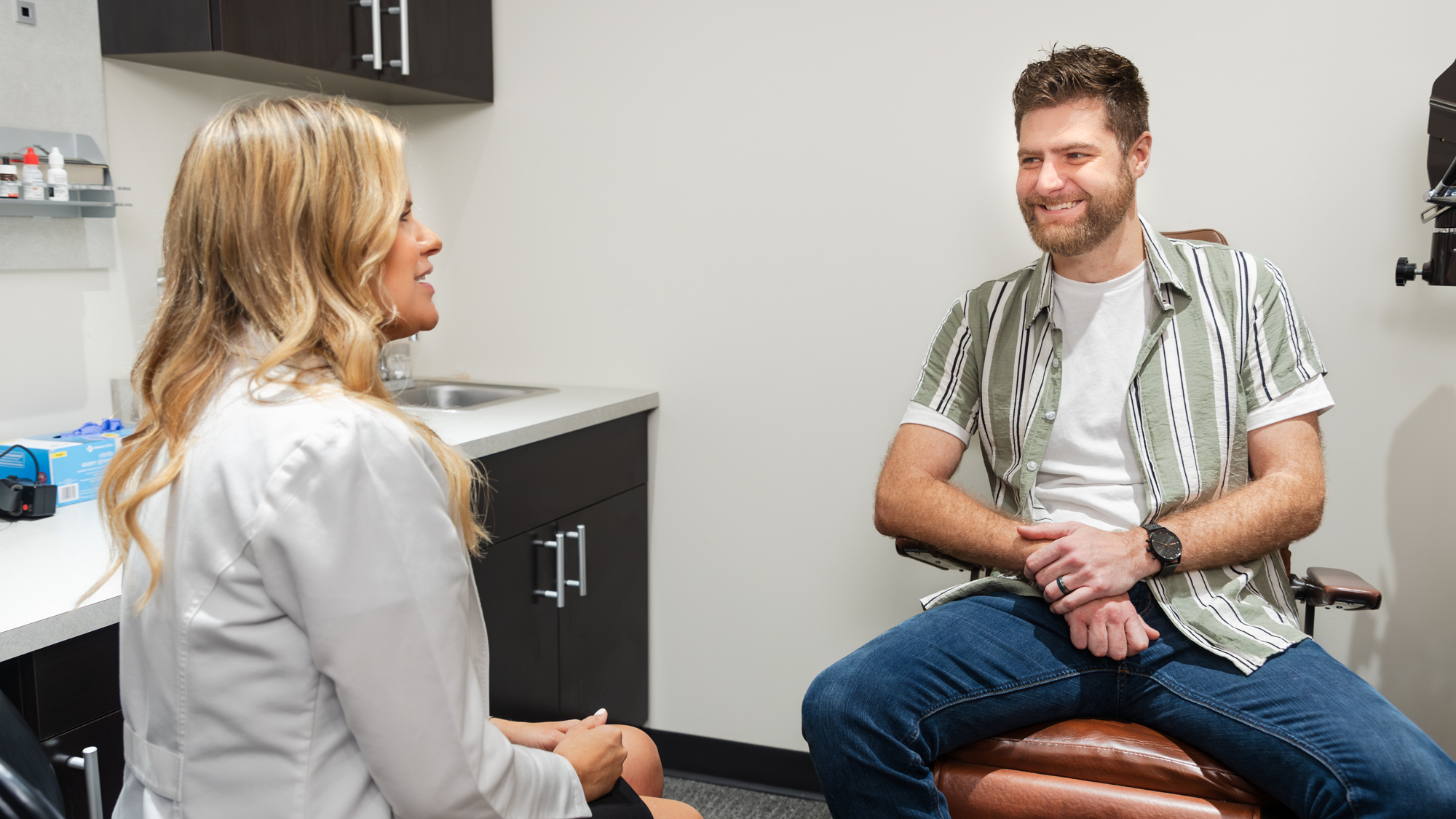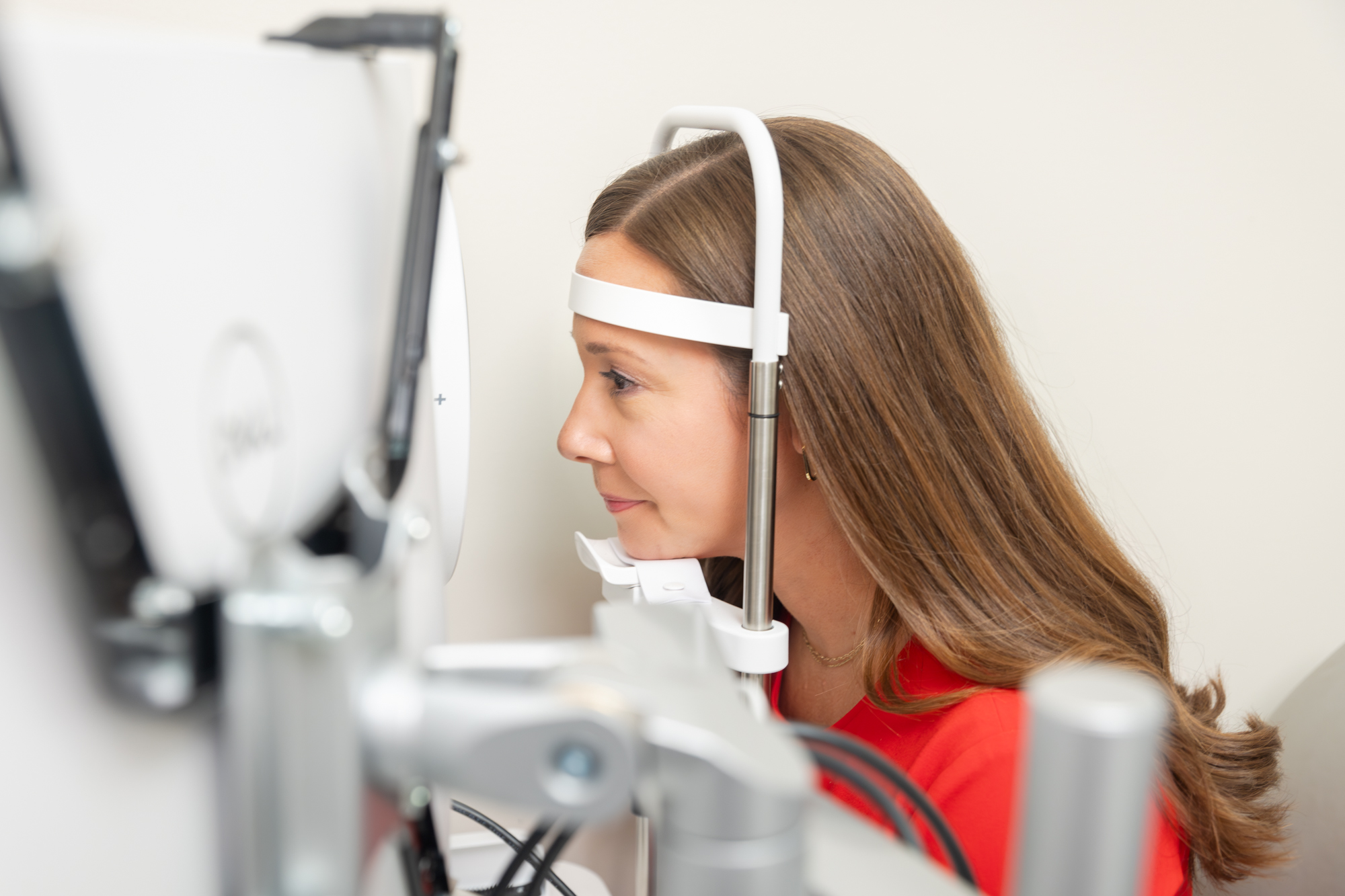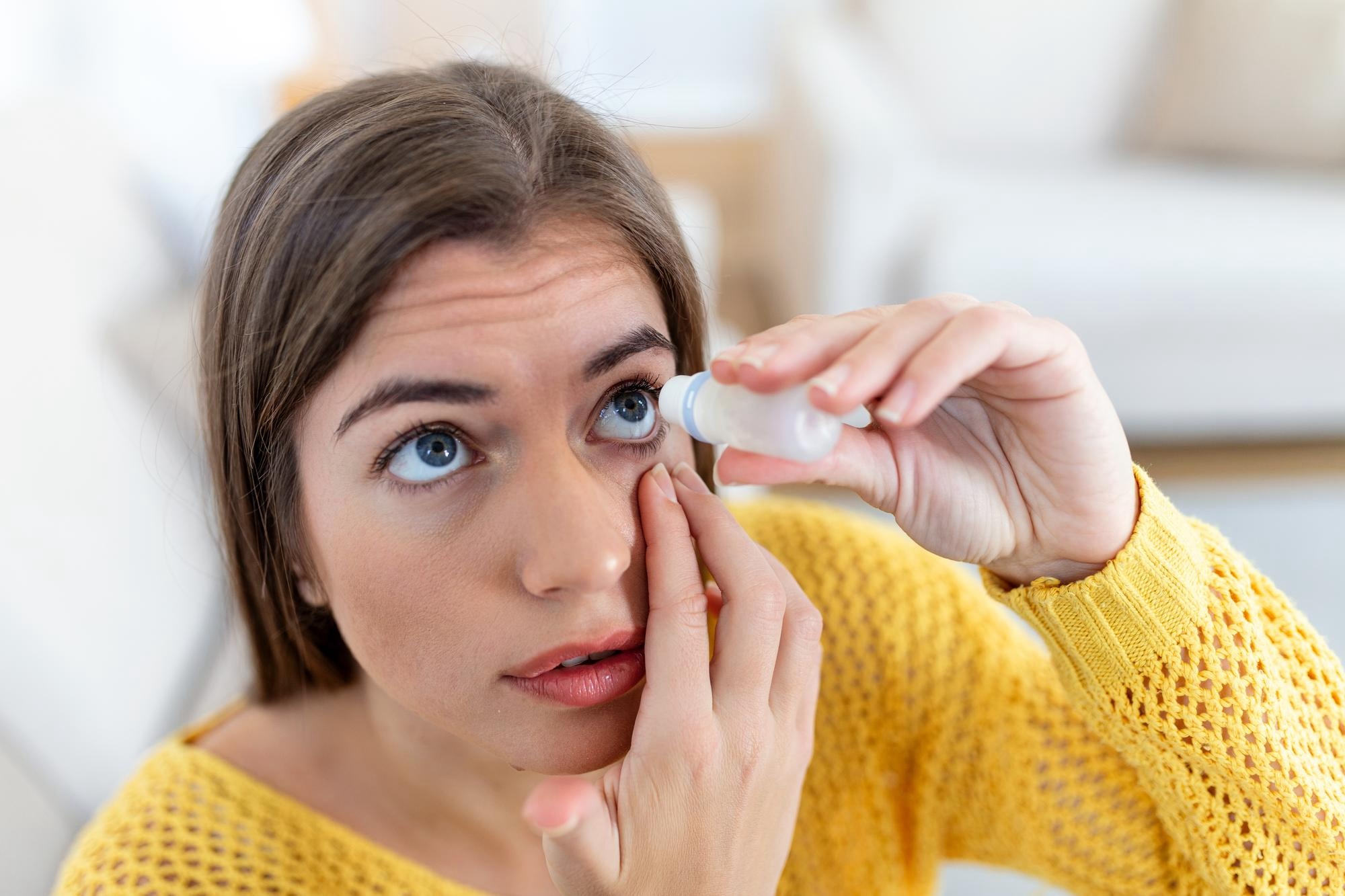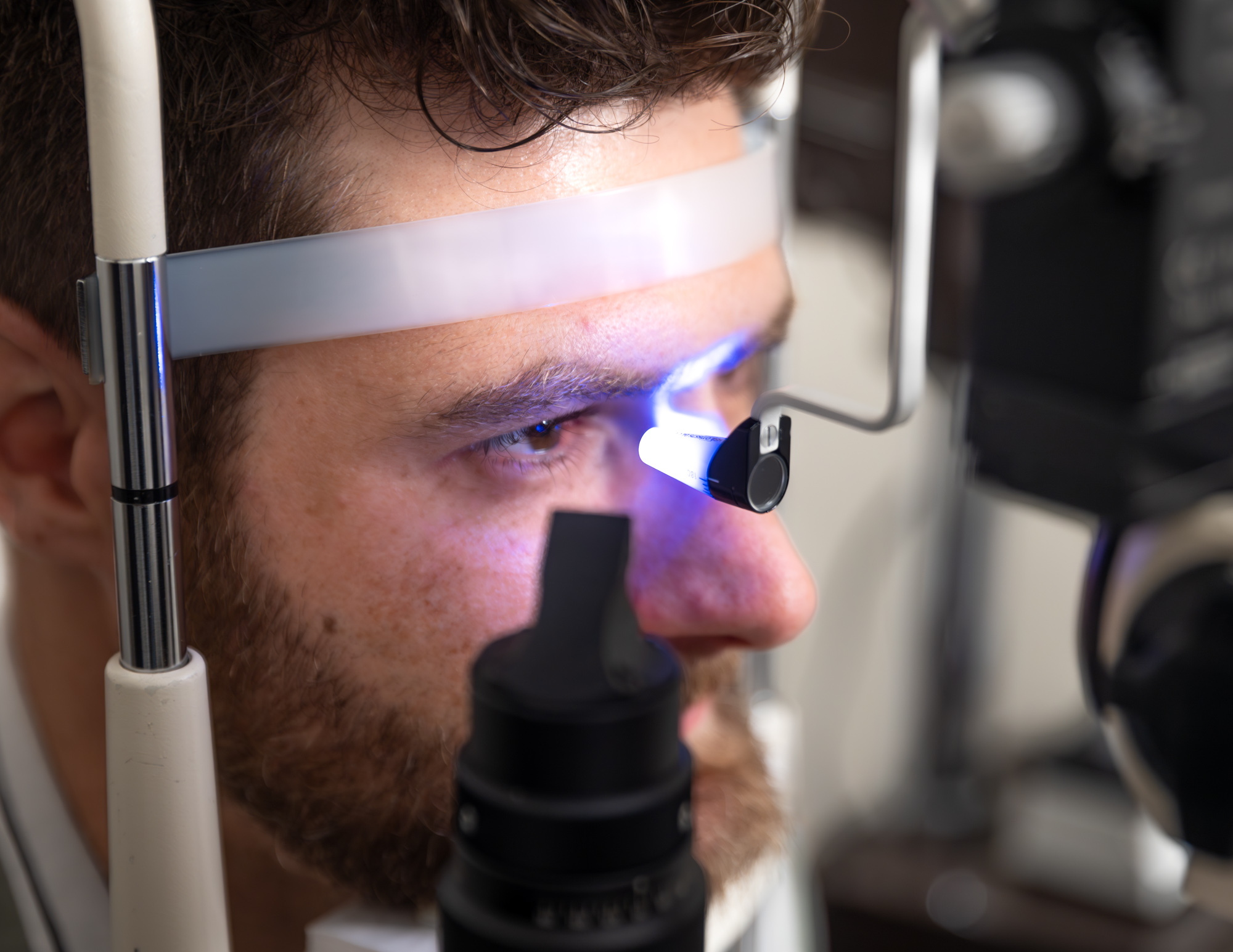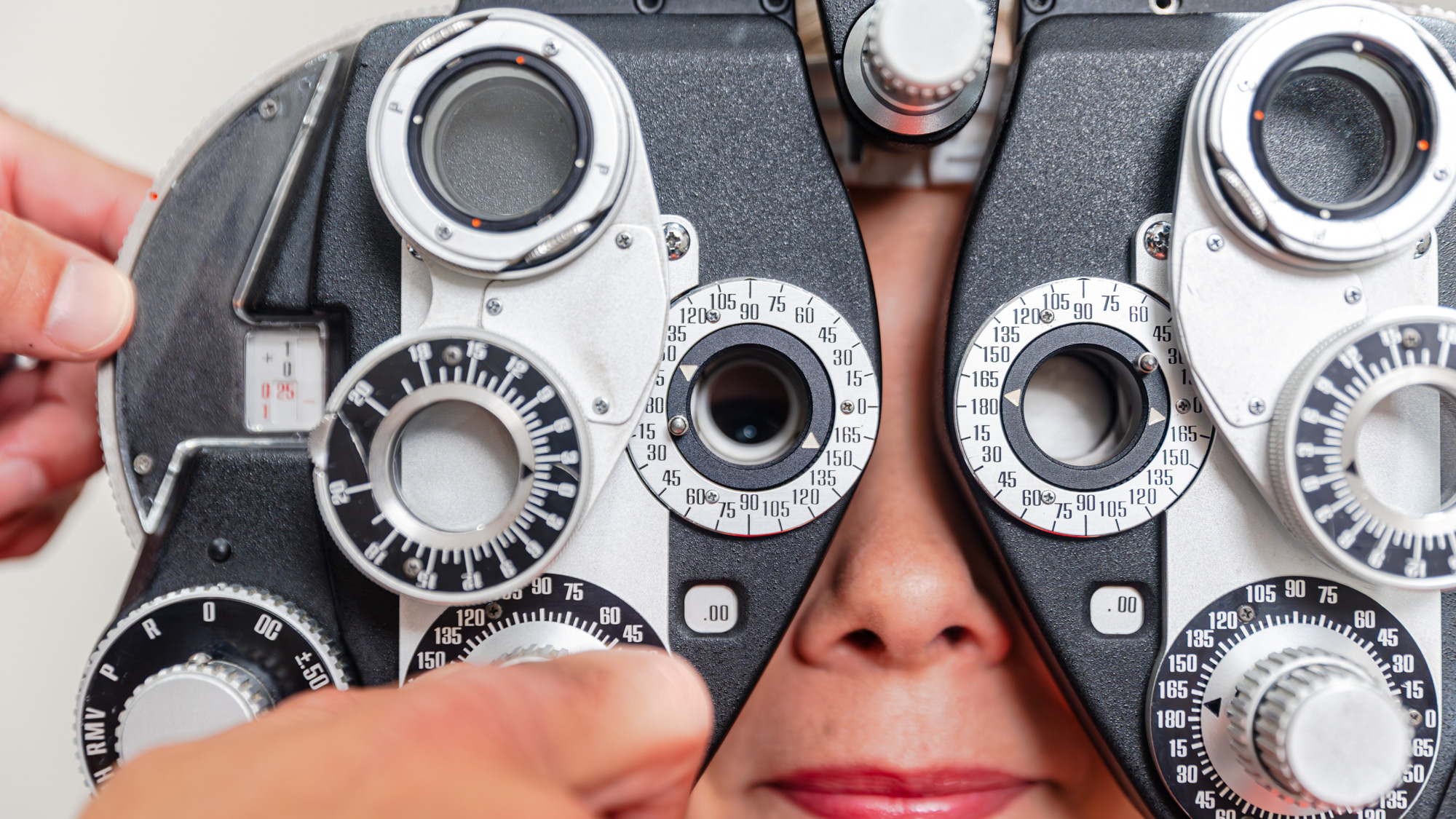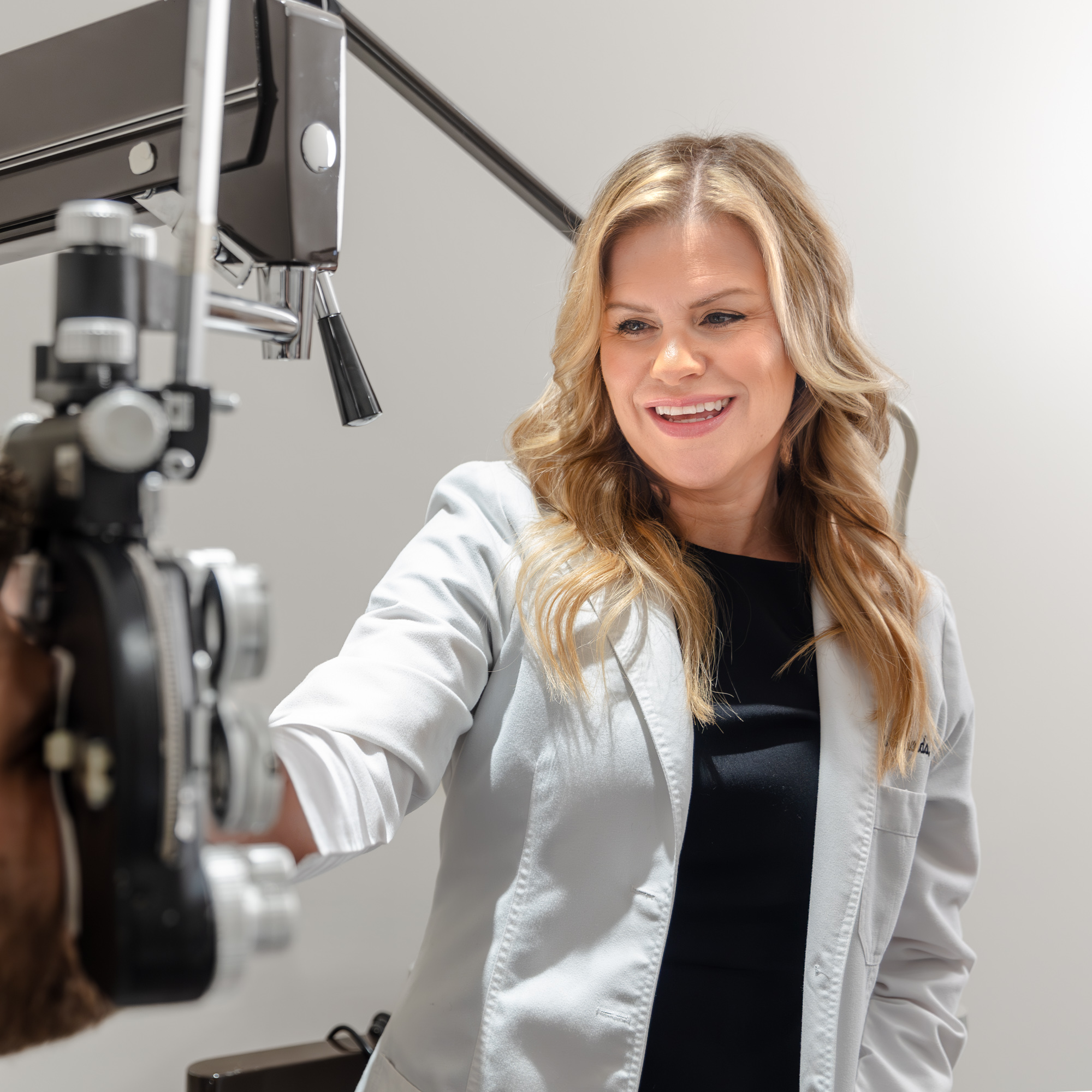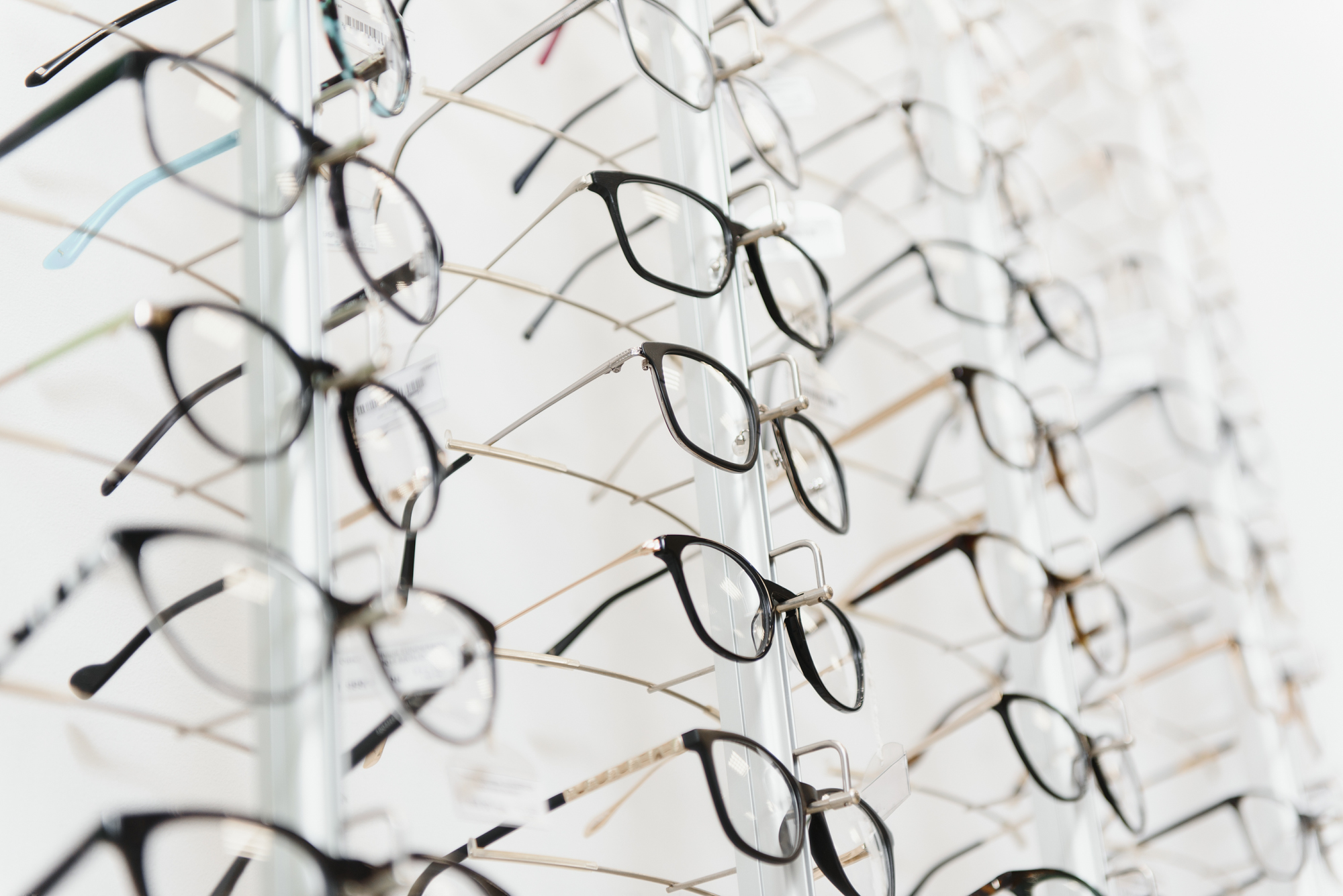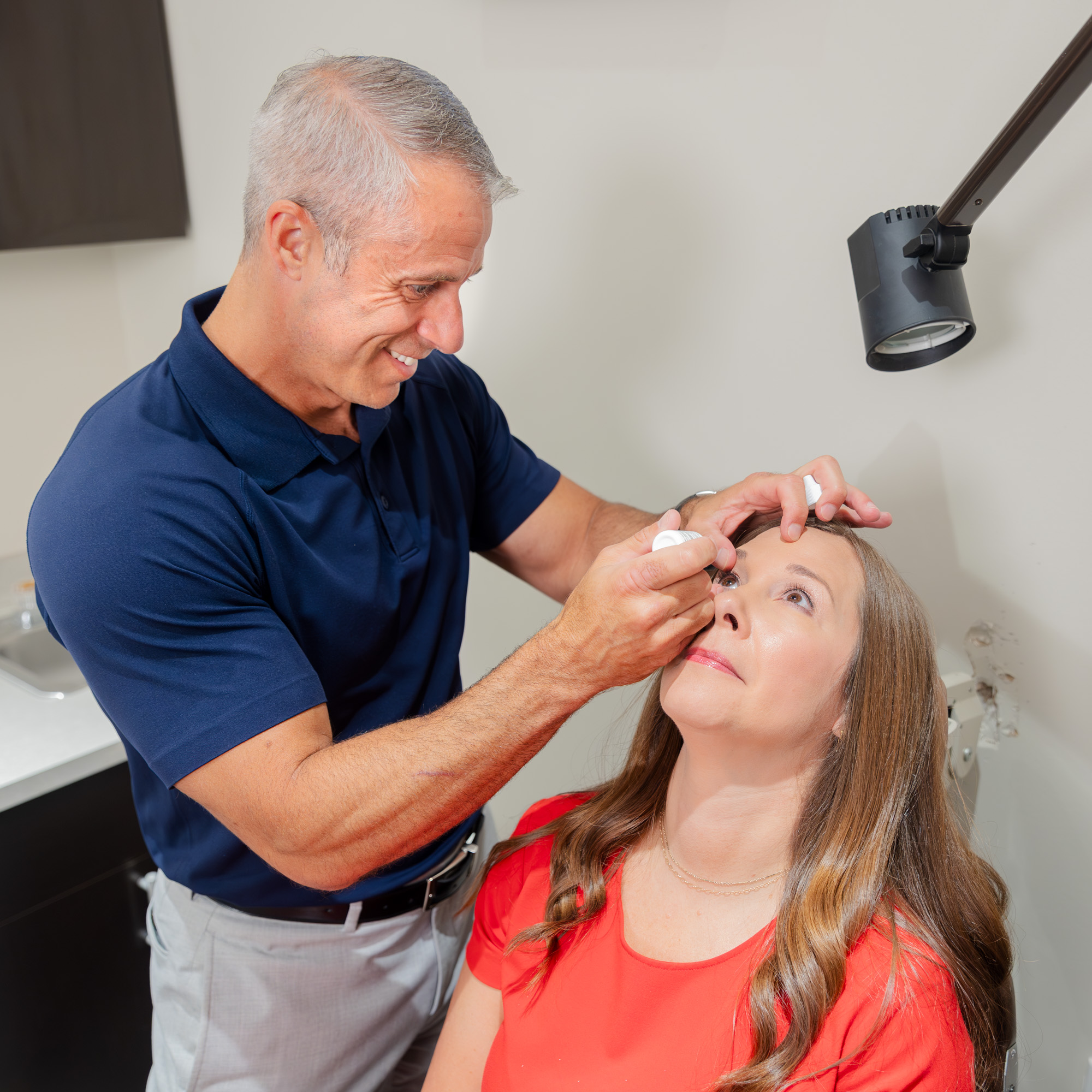With our advanced Antares device, we can identify meibomian blockages—but that’s only one form of dry eye. Our skilled providers use a variety of different tests and exams to determine the exact type of dry eye condition that you have.
Some dry eye conditions are caused by a deficiency of the tear gland (the lacrimal gland) rather than the meibomian gland. We can diagnose tear issues using the Schirmer tear test. In this test, we will place small test strips on each eyelid to collect tears over a few minutes. We’ll then compare how many tears were produced against a control to see if you have a tear deficiency. This lets us know if you have a tear duct issue that is causing dry eye.
Another issue that can cause dry eye is tear breakup time. This measurement refers to how long it takes before your tears begin to break up and evaporate. We can test this time by adding a fluorescent material to your tear film so that your tears shine under a special light. Then, we’ll measure how long it takes between a tear’s formation and the first dry spot appearing in your film. If the number is lower than 10 seconds, we can diagnose you with an evaporative dry eye condition.
Finally, we can use a slit lamp test to check if your eyes are producing enough tears. This test is part of a routine eye exam, so you’ve probably had a slit lamp test before. We’ll start by shining a bright light into your eye; then, we’ll observe the eye with a special microscope.
We use all of these methods in tandem to provide definitive diagnoses for your condition.
